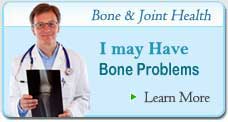» Anti-Aging
» Bones Joints & Muscle Health
» Cardiovascular Health
- Hip And Knee Joint Replacements: The Infection Risks
- All About Excessive Sweating & How To Stop Hyperhidrosis Sweats Ruining Your Life
- Should You Be Worried About Diabetic Retinopathy? Find Out If You Are Developing & How To Prevent It
- Must Know Lyme Disease Information - You Might Be Surprised To Find Out...
- Do You Have Sleep Apnea? Find Out What It Is And How To Treat It
» Chronic Pain Management
» Dental Health & Wellness
» Digestive Health Problems
» Health Care
» Mental Health
» Sexual Health
» Skin Care

Atherosclerosis: A Preventable Killer
Cardiovascular disease kills over 800,000 Americans each year. One of the most common causes of this killer is a condition called atherosclerosis. In patients with this condition, cholesterol invades the walls of the arteries reducing blood flow and leading to potentially deadly blood clots. These clots can cause heart attacks, strokes and other vascular problems.
Atherosclerosis is a progressive condition that becomes worse as people age. Doctors estimate that most people over 60 years of age have some degree of this condition, although most have no discernible symptoms.
Although it is a serious and potentially deadly condition, there are a number of effective treatment and prevention strategies for atherosclerosis sufferers and those at risk of developing the problem.
What Causes Atherosclerosis
What the exact cause of atherosclerosis, researchers are uncertain. Researchers theorize that it begins with damage to the lining of arteries, a type of tissue called endothelium. Such damage could result from high blood pressure, smoking, elevated levels of fat and cholesterol in the blood or high blood sugar due to diabetes or insulin resistance.
Whatever its cause, the damaged endothelium is vulnerable to invasion by a type of cholesterol called LDL or bad cholesterol. The LDL adheres to the damaged arterial walls, attracting white blood cells.
The resulting mass of cholesterol, white blood cells and cellular debris forms a substance called plaque. Plaque builds up in the arteries, narrowing the space available for blood to flow.
This leads to blocked arteries, arterial rupture and, eventually. heart attacks and strokes.
Symptoms of Atherosclerosis
While damage to the arteries and plaque formation can start in childhood, symptoms may not begin until patients are middle aged or older. These symptoms only occur when the space within the arteries narrows to the point that organs do not receive adequate blood supply or when plaque causes arteries to rupture, leading to blood clots.
Symptoms vary by the location of the affected arteries.
Atherosclerosis in the arteries of the heart often presents as angina, commonly called chest pain. Stable atherosclerotic plaques in the brain can result in numbness, muscle weakness, drooping of the face or slurred speech.
In the arms and legs, atherosclerosis usually presents as pain associated with movement. Any of these symptoms should prompt patients to seek immediate medical attention.
Once symptoms occur, atherosclerosis is already moderate or severe. Further delay in obtaining treatment could result in a heart attack, stroke or other vascular event.
How To Diagnose the Disease
The diagnosis of atherosclerosis involves a thorough medical history, physical examination, laboratory evaluations and imaging studies. Doctors will use history to determine a patient’s risk factors for atherosclerosis and the presence of any symptoms consistent with the condition.
On physical examination, patients with atherosclerosis may have evidence of abdominal aneurysm or aneurysm behind the knee, decreased pulse or blood pressure in diseased limbs, poor wound healing due to decreased blood flow or abnormal sounds over the arteries as heard through a stethoscope.
If a doctor suspects atherosclerosis, he or she will order further tests.
These will usually include blood work to measure blood sugar and cholesterol and other tests. The choice of further tests will depend on the location or locations of suspected blockages.
Common tests include Doppler ultrasounds to measure blood flow, electrocardiograms, stress tests, angiograms and other imaging studies such as magnetic resonance angiograms and CT scans.
How To Promote Cardiovascular Health
The best way to prevent atherosclerosis is to lead a healthy, active life. Patients need to eat a balanced diet, exercise regularly, avoid or quit smoking, drink alcohol only in moderation and maintain a healthy weight.
The best diet for atherosclerosis prevention is one that is low in fat, cholesterol and sodium and consists of lean protein sources, low fat dairy products and plenty of fresh fruits, vegetables and whole grains.
Additionally, patients need to be careful about blood sugar levels and blood pressure. High blood pressure and high blood sugar can lead to rapid arterial damage, greatly accelerating the progression of atherosclerosis.
For this reason, diabetics and those with high blood pressure need to seek regular medical care in order to manage their conditions.
Improved Prognosis
Prognosis for those with atherosclerosis varies greatly depending on overall health, age, response to treatment and severity of the disease. Over the past 30 years, better treatments and increased awareness have caused death rates from atherosclerosis to fall by an estimated 25%. For most patients with moderate disease, the damage of atherosclerosis can be slowed with appropriate therapy.
In fact, studies demonstrate improvement and a decreased risk of sudden death after as little as a year and a half of therapy with cholesterol reducing medications and improved lifestyle behavior.
For patients, with more advanced disease, prognosis depends on the location of the damage, the extent of the disease and the success rate of the particular procedure needed to treat the problem.
Treatment Options
The first line of treatment for atherosclerosis is the alteration of a patient’s diet and lifestyle. The same healthy diet, exercise routine and other lifestyle alterations recommended to prevent atherosclerosis are useful in treating the condition.
However, once symptoms are present, diet and lifestyle changes are usually not sufficient for most patients.
When diet and lifestyle changes are insufficient, doctors have a number of medications for the treatment of atherosclerosis. Cholesterol lowing medications, such as statins, can reduce LDL and slow or reverse plaque build-up in the arteries.
Aspirin and other drugs that reduce blood clotting are often prescribed to prevent new clots from forming. Blood pressure medications, such as diuretics, beta blockers, calcium channel blockers and ACE inhibitors, can control blood pressure and slow damage to the arteries.
Other medications, such as those that control diabetes, are also possibilities. Doctors base each patient’s precise medication regimen on the individual’s health profile, risk factors and the severity of the disease.
In some cases, atherosclerosis is so advanced that even medications are not enough to treat the problem. Fortunately, several surgical procedures exist to treat manifestations of this condition. These procedures include angioplasty, surgical removal of fat from blocked arteries, injection of clot dissolving medication into existing clots and bypass surgery.
The particular procedure recommended varies by the location of the clot, its severity and the patient’s overall health.
Ultimately, the best cure for atherosclerosis is to avoid it altogether with an improved, vitamin rich diet and regular low impact exercise.
» Learn How To Improve Cardiovascular Health Now
You May Also Find Informative:
Aging Fit - Health Research & Information
Better Health. Energy. Quality.






